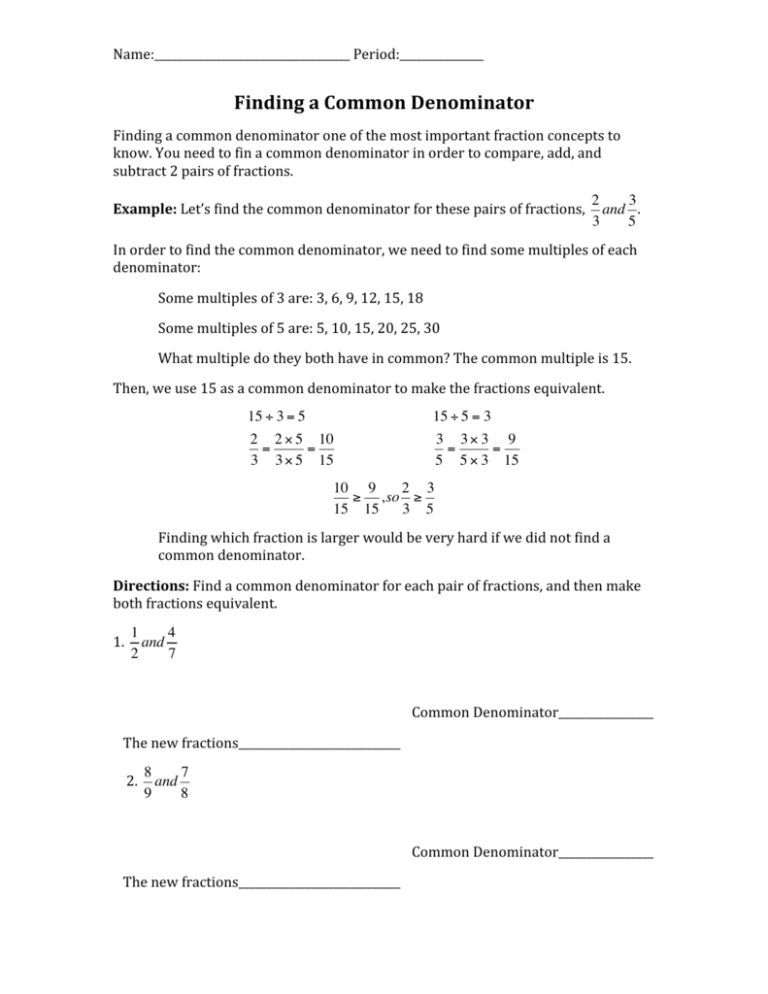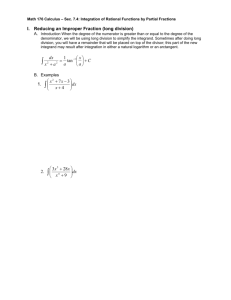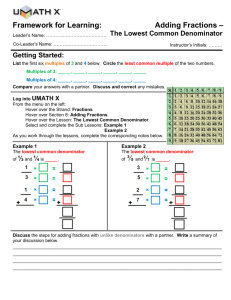Finding a Common Denominator
advertisement

Name:___________________________________ Period:_______________ Finding a Common Denominator Finding a common denominator one of the most important fraction concepts to know. You need to fin a common denominator in order to compare, add, and subtract 2 pairs of fractions. 2 3 Example: Let’s find the common denominator for these pairs of fractions, and . 3 5 In order to find the common denominator, we need to find some multiples of each denominator: € Some multiples of 3 are: 3, 6, 9, 12, 15, 18 Some multiples of 5 are: 5, 10, 15, 20, 25, 30 What multiple do they both have in common? The common multiple is 15. Then, we use 15 as a common denominator to make the fractions equivalent. 15 ÷ 3 = 5 15 ÷ 5 = 3 2 2 × 5 10 3 3 × 3 9 = = = = 3 3 × 5 15 5 5 × 3 15 10 9 2 3 ≥ ,so ≥ 15 15 3 5 € € Finding which fraction is larger would be very hard if we did not find a common denominator. € Directions: Find a common denominator for each pair of fractions, and then make both fractions equivalent. 1 4 1. and 2 7 € Common Denominator_________________ The new fractions_____________________________ 8 7 2. and 9 8 € Common Denominator_________________ The new fractions_____________________________ Name:___________________________________ Period:_______________ 1 1 3. and 6 8 € Common Denominator_________________ The new fractions_____________________________ Directions: Use common denominators to find which fraction is greater. Circle the fraction that is greater. 5 6 4. and 9 10 € 2 21 5. and 3 30 € 3 5 6. and 8 11 € Directions: Use common denominators to find which fraction is smaller. Circle the fraction that is smaller. 2 5 7. and 3 6 € 8 23 8. and 9 27 € 3 3 9. and 7 6 €







